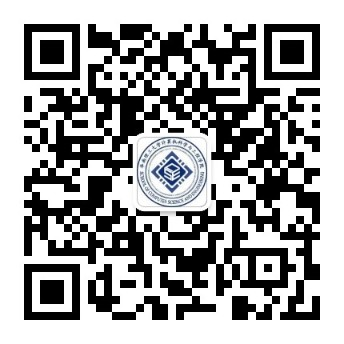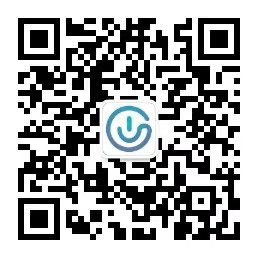《计算机网络》教学大纲
课程代码 | 045101052 |
课程名称 | 计算机网络 |
英文名称 | Computer Networks |
课程类别 | 专业基础课 |
课程性质 | 必修 |
学时 | 总学时:64 实验学时:16 实习学时:0其他学时:0 |
学分 | 3.5 |
开课学期 | 第四学期 |
开课单位 | 计算机科学与工程学院 |
适用专业 | 计算机科学与技术、网络工程、信息安全 |
授课语言 | 中文授课 |
先修课程 | 计算机科学概论 |
毕业要求(专业培养能力) | 本课程对学生达到如下毕业要求有如下贡献:
|
课程培养学生的能力(教学目标) | 完成课程后,学生将具备以下能力:
|
课程简介 | 本课程是计算机科学与技术专业的一门专业课。课程介绍了计算机网络及其新技术和新发展,内容包括:计算机网络的协议与体系结构、物理层、数据链路层、局域网、广域网、网络层、传输层、应用层。 |
教学内容与学时分配 |
1.1 计算机网络的应用 0.5学时 1.2 网络硬件0.5学时 1.3 网络软件0.5学时 1.4 参考模型 2学时 1.5 网络标准化0.5学时 教学要求:要求了解掌握网络历史和发展、网络类型、对等通信、封装、参考模型。 重点:参考模型及两种参考模型的比较 难点:封装的概念以及参考模型。
2.1 数据通信的理论基础1学时 2.2 有导向的传输介质1学时 2.3 公共交换电话网络2学时 2.4 移动电话系统2学时 教学要求:要求学生掌握奈奎斯特定理、香农定理、传输介质、PSTN结构、干线复用技术、调制解调技术、CDMA原理、1G/2G/3G移动电话系统 重点:干线复用技术、调制解调技术、传输介质 难点:CDMA、奈奎斯特定理、香农定理
3.1 数据链路层设计要点 1学时 3.2 错误检测和纠正 1学时 3.3 基本数据链路协议 1学时 3.4 滑动窗口协议 1学时 3.5 协议验证 1学时 3.6 数据链路层协议实例 1学时 教学要求:要求学生掌握成帧方法、检错纠错方法(海明码、CRC)、数据链路层的6个协议、协议验证方法、HDLC、PPP 重点:可靠传输的保证技术,主要包括肯定确认重传、载道确认等、回退n帧、选择性重传等、纠错码、检错码 难点:成帧方法、海明码、CRC、滑动窗口协议
4.1 信道分配问题 1学时 4.2 多路访问协议 2学时 4.3 以太网 2学时 4.4 数据链路层交换 1学时 课程要求:掌握信道分配方法、多路访问协议(ALOHA、CSMA、WDMA)、以太网技术、数据链路层交换 重点:信道分配方法、CSMA/CD、以太网技术、网桥原理 难点:各项多路访问协议
5.1 网络层设计要点 1学时 5.2 路由算法 6学时 5.3 拥塞控制算法 1学时 5.4 网络互联 4学时 5.5 internet上的网络层 4学时 课程要求:网络层的主要功能、路由选择算法、OSPF协议、RIP协议、拥塞控制策略、网络互联技术、IP协议、 重点:路由选择协议、IP协议 难点:路由选择协议、IP协议
6.1 传输服务 1学时 6.2 传输协议的要素 1学时 6.3 internet传输协议-UDP 2学时 6.4 internet传输协议-TCP 2学时 课程要求:要求学生掌握传输层的主要功能、TCP协议、主要包括段格式、传输技术等,UDP协议 重点:TCP及可靠保证传输技术、Socket编程技术 难点:TCP协议、UDP协议
7.1 DNS域名系统 2学时 7.2 电子邮件 1学时 7.3 万维网 1学时 课程要求:要求学生掌握DNS系统、域名解析方法、资源记录、电子邮件传输、万维网、HTTP 重点:DNS域名解析、电子邮件 难点:DNS工作原理 |
实验教学(包括上机学时、实验学时、实践学时) | (1)实验一:网线制作(1小时):要求学生学习制作直通线和交叉线。 (2)实验二:抓包分析(2学时):要求学生学会使用抓包工具,如:wireshark,分析ARP请求应答中的数据报文内容,解释重要的字段;抓取TCP连接建立的三次握手包,并分析;提交实验报告。 (3)实验三:路由器基本操作和组网(5学时):要求学生学习路由器的基本操作,并能够利用路由器、交换机和PC进行组网,并配置通达;提交实验报告。 (4)实验四:socket编程(8学时):要求学生利用socket编制简单的网络通信程序,要求学生独立编制运行,提交实验报告。 |
教学方法 | 课程教学采用混合式教学,以MOOC/SPOC进行线上学习、以翻转课堂、讨论、堂测等形式进行堂上学习;线上课下采用限时测试、同伴互评进行形成性评价。 |
考核方式 | 本课程注重过程考核评价,最终成绩比例为: 平时课堂表现:10% 实验表现:15% 线上测试、同伴互评:35% 期末考试(闭卷):40% |
教材及参考书 | 现用教材:(荷)Andrew S. Tanenbaum,(美)David J. Wetherall,严伟等译,计算机网络(第5版),清华大学出版社,2012 主要参考资料: [1] (美)Larry L.Peterson,Bruce S.Davie,Computer Networks: A Systems Approach, Fifth Edition,机械工业出版社,2012 [2] (美)Behrouz A. Forouzan,Firouz Mosharraf,Computer Networks: A Top-Down Approach,机械工业出版社,2013 |
制定人及制定时间 | 袁华,2019年4月15日 |
“Computer Networks” Syllabus
Course Code | 045101052 |
Course Title | Computer Networks |
Course Category | Specialty Basic Course |
Course Nature | Compulsory Course |
Class Hours | 64 teaching sessions, including 16 lab sessions |
Credits | 3.5 |
Semester | The forth semester |
Institute | School of Computer Science and Engineering |
Program Oriented | Computer science and technology, network engineering, information security |
Teaching Language | English |
Prerequisites | Foundations of Computer Science |
Student Outcomes (Special Training Ability) |
|
Teaching Objectives |
|
Course Description | The course is a specialized course of Professional Computer Science and Technology; It introduces the computer network, the new development and new technologies of computer network, it mainly involves:Computer network protocols and architecture, physical layer, data link layer, LAN, WAN, network layer, transport layer, application layer. |
Teaching Content and Class Hours Distribution | Chapter 1 Introduction (4 hours) 1.1 Uses of Computer Networks (0.5 hours) 1.2 Network Hardware (0.5 hours) 1.3 Network Software (0.5 hours) 1.4 Reference Model (2 hours) 1.5 Network Standardization (0.5 hours) Contents: Introduction and background of Computer networks, Reference Models, and standardization of Computer networks. Key points: Reference Models. Chapter 2 the Physical Layer (6 hours) 2.1 The Theoretical Basis for Data Communication (1 hours) 2.2 Guided Transmission Media (1 hours) 2.3 The Public Switched Telephone Network (2 hours) 2.4 The Mobile Telephone System (2 hours) Contents: Fourier analysis, Nyquist theorem, Sharon theorem, Transmission media, Telephone Systems, Mobile Telephone system. Key points: Nyquist theorem, Sharon theorem, Multiplexing, Modulation, CDMA Chapter3 the Data Link Layer(6 hours) 3.1 Data Link Layer Design Issues(1 hours) 3.2 Error Detection and Correction(1 hours) 3.3 Elementary Data Link Protocols(1 hours) 3.4 Sliding Window Protocols(1 hours) 3.5 Protocol Verification(1 hours) 3.6 Example Data Link Protocols(1 hours) Contents: Error processing, 6 DLL elementary protocols Key points: Hamming code, CRC, sliding window Chapter4 The Medium Access Control Sublayer(6 hours) 4.1 The Channel Allocation Problem (1 hours) 4.2 Multiple Access Protocols(2 hours) 4.3 Ethernet(2 hours) 4.4 Data Link Layer Switching(1 hours) Contents: Channel allocation protocols, ALOHA and CSMA, Ethernet and IEEE802.3 Key points: CSMA/CD, Ethernet Chapter5 the Network Layer(16 hours) 5.1 Network Layer Design Issues(1 hours) 5.2 Routing Algorithms(6 hours) 5.3 Congestion Control Algorithms(1 hours) 5.4 Internetworking(4 hours) 5.5 The Network Layer in the Internet(4 hours) Contents: Routing algorithms and Internet Protocol. Key points: DV and LS routing algorithms, IP protocol, NAT, CIDR Chapter6 the Transport Layer (6 hours) 6.1 The Transport Service (1 hours) 6.2 Elements of Transport Protocols (1 hours) 6.3 The Internet Transport Protocols: UDP (2 hours) 6.4 The Internet Transport Protocols: TCP (2 hours) Contents: Functionalities of Transport Layer, TCP, UDP. Key points: TCP and UDP Chapter7 the Application Layer(4 hours) 7.1 DNS—The Domain Name System 7.2 Electronic Mail 7.3 The World Wide Web Contents: Working principles of DNS, e-mail and WWW Key points: DNS |
Experimental Teaching | (1)Experiment 1:Do cable UTP-5(1 hours): learn how to do RJ45 and UTP (2)Experiment 2:Packet/Frame Analysis(2 hours):master using of Wireshark to analyze the important field of packet/frame (3)Experiment 3: Basic Operation of Router and deployment of networks(5 hours):learn how to use router and master basic configurations of router, and learn the deployment of network. (4)Experiment 4: Socket programming (8 hours):master programming a simple communication application using socket. |
Teaching Method | Blended teaching: online learning( MOOC/SPOC)+offline teaching( Flipped classroom/rain class) |
Examination Method | Class participation: 10% Experiment: 15% Online assessment: 35% Final exam: 40% |
Teaching Materials and Reference Books | Textbook:
Reference [1] Larry L.Peterson, Bruce S.Davie, Computer Networks: A Systems Approach, Fifth Edition, China Machine Press, 2012 [2] Behrouz A. Forouzan, Firouz Mosharraf, Computer Networks: A Top-Down Approach, China Machine Press , 2013 |
《计算机网络》实验教学大纲
课程代码 | 045101052 |
课程名称 | 计算机网络 |
英文名称 | Computer Networks |
课程类别 | 专业基础课 |
课程性质 | 必修 |
学时 | 总学时:64 实验:16 上机:0 |
学分 | 3.5 |
开课学期 | 第四学期 |
开课单位 | 计算机科学与工程学院 |
适用专业 | 计算机科学与技术、网络工程、信息安全 |
授课语言 | 中文授课 |
先修课程 | 计算机科学概论 |
毕业要求(专业培养能力) | 本课程对学生达到如下毕业要求有如下贡献:
|
课程培养学生的能力(教学目标) | 完成课程后,学生将具备以下能力:
|
课程简介 | 本课程是计算机科学与技术专业的一门专业课。课程介绍了计算机网络及其新技术和新发展,内容包括:计算机网络的协议与体系结构、物理层、数据链路层、局域网、广域网、网络层、传输层、应用层。 |
主要仪器设备与软件 | 计算机、交换机、路由器、网络实验模拟系统或PacketTracer、WireShark |
实验报告 | 独立完成实验,每项实验一份报告。 |
考核方式 | 现场检查,实验报告检查。 |
教材、实验指导书及教学参考书目 | [1]袁华,计算机网络实验指南,自编教程,2019 [2] (荷)Andrew S. Tanenbaum,(美)David J. Wetherall,严伟等译,计算机网络(第5版),清华大学出版社,2012 |
制定人及发布时间 | 袁华,2019年5月6日 |
《计算机网络》实验教学内容与学时分配
实验项目编号 | 实验项目名称 | 实验学时 | 实验内容提要 | 实验类型 | 实验要求 | 每组人数 | 主要仪器设备与软件 |
1 | 网线制作 | 2 | 制作一条直通线,制作一条交叉线。 | 探索性 | 必作 | 1 | 剥线钳、压线钳、测试仪、UTP、水晶头等 |
2 | 抓包分析 | 2 | 要求学生学会使用抓包工具,如:WireShark,分析ARP请求应答中的数据报文内容,分析三次握手成功和不成功的报文;分析ICMP数据包;解释重要的字段,提交实验报告。 | 验证性 | 必做 | 1 | 计算机、WireShark |
3 | 路由器基本操作及组网 | 4 | 学习路由器的基本操作和组网实验,将两个远程网络配置通达;提交实验报告。 | 设计性 | 必做 | 1~8 | 路由器、交换机等 |
4 | socket编程 | 8 | 要求学生利用socket编制简单的网络通信程序,要求学生独立编制运行,提交实验报告。 | 探索性 | 必做 | 1 | 计算机、编程环境 |
“Computer Networks” Syllabus
Course Code | 045101052 |
Course Title | Computer Networks |
Course Category | Disciplinary Basic Course |
Course Nature | Compulsory Course |
Class Hours | 64 teaching sessions, including 16 lab sessions |
Credits | 3.5 |
Semester | |
Institute | School of Computer Science and Engineering,network engineering,information security |
Program Oriented | Computer science and technology |
Teaching Language | Chinese |
Prerequisites | Foundations of Computer Science, Computer Organization and Architecture |
Student Outcomes (Special Training Ability) |
|
Teaching Objectives |
|
Course Description | The course is a specialized course of Professional Computer Science and Technology; It introduces the computer network, the new development and new technologies of computer network, it mainly involves:Computer network protocols and architecture, physical layer, data link layer, LAN, WAN, network layer, transport layer, application layer. |
Instruments and Equipments | Computers, Switches, Routers,cables |
Experiment Report | Individual report. One report for each task. |
Assessment | Checks on site and marking lab report. |
Teaching Materials and Reference Books | [1]Yuan Hua, Experimental Guidance of computer networks, 2019 [2]Andrew S. Tanenbaum, David J. Wetherall, Computer networks, Fifth edition, Tsinghua University Press, 2012 |
Prepared by Whom and When | Yuan Hua,2019/05/06 |
“Computer Networks” Experimental Teaching Arrangements
No. | Experiment Item | Class Hours | Content Summary | Category | Requirements | Number of StudentsEach Group | Instruments, Equipments and Software |
1 | Making cable | 2 | earn how to make straight-way cable and cross-over cable using RJ45 and UTP | Exploratory | Compulsory | 1 | Stripper、Plier、Tester、RJ45、UTP5/6 |
2 | Packet/Frame Analysis | 2 | master using of windump / tcpdump,and analyze the important field of packet/frame | Verification | Compulsory | 1 | PC, WireShark |
3 | Basic operation of router and networking | 4 | l master basic configurations of router and networking. | Design | Compulsory | 1-8 | PC, switch, router, |
4 | Socket programming | 8 | master programming a simple communication application using socket. | Exploratory | Compulsory | 1 | PC、API |



